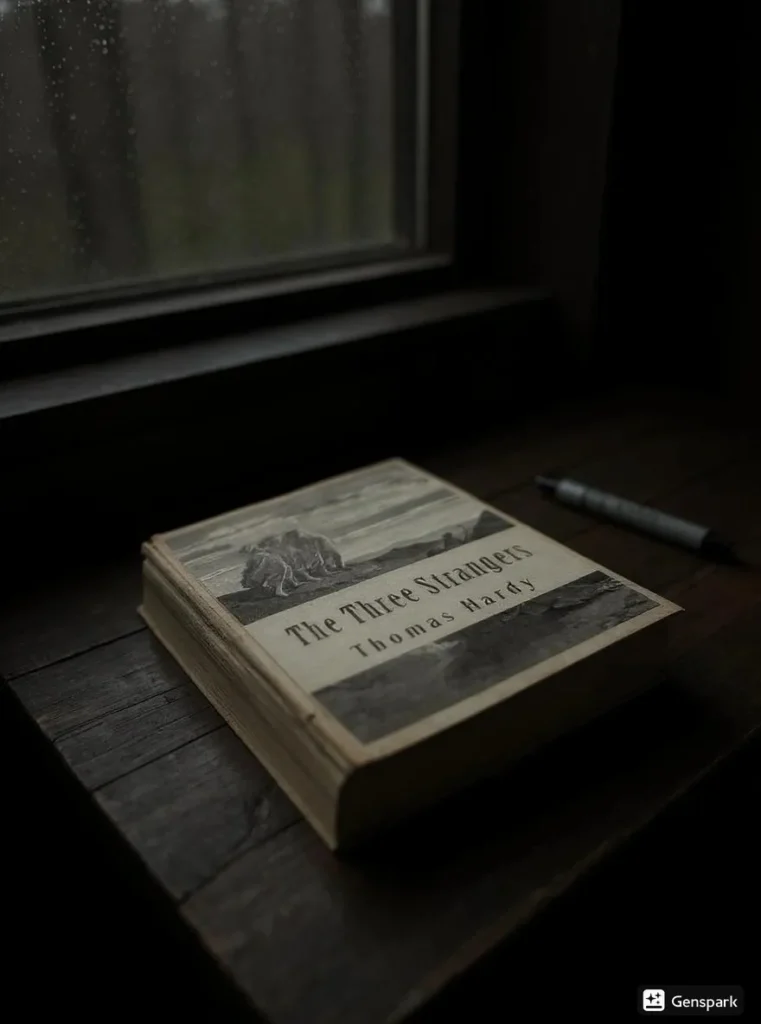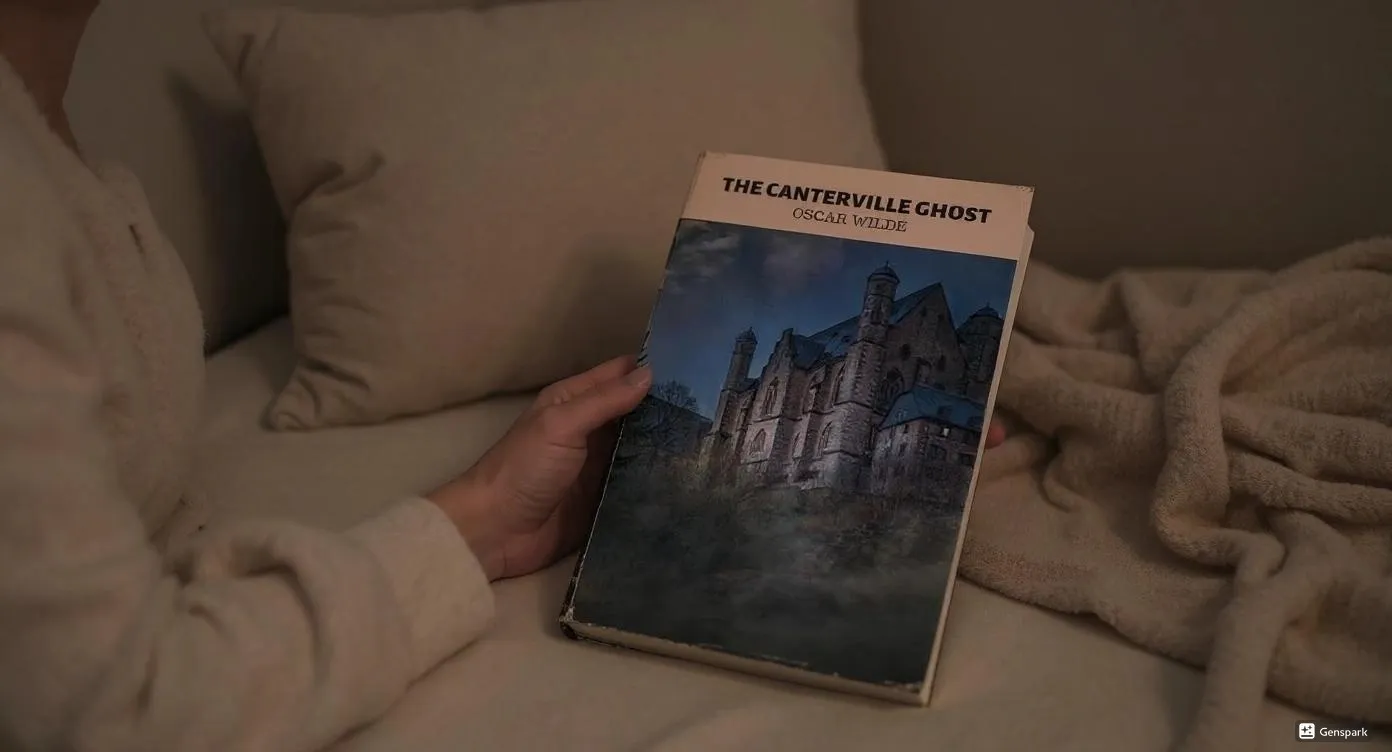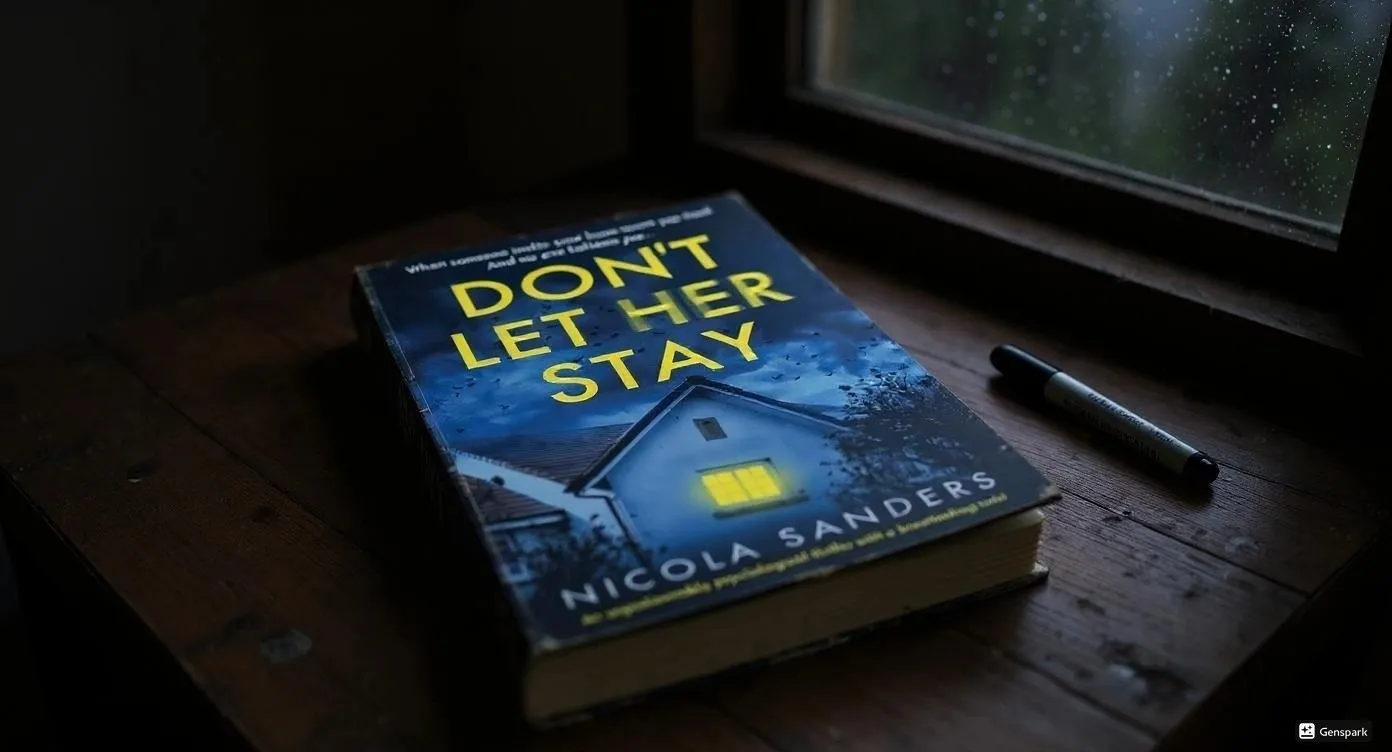I picked up “The Three Strangers” on a rainy Tuesday evening in October, expecting nothing more than a quick Victorian story to pass the time. By 11:47 PM, I was frantically texting my book club friends about the jaw-dropping revelation that left me staring at the ceiling until 3 AM. Hardy’s 1883 masterpiece from Wessex Tales grabbed me by the throat and refused to let go.
I’ve devoured over 2,000 Victorian short stories in my twenty-year reviewing career, but this one made me question everything I thought I knew about pastoral fiction. The story follows three mysterious strangers who arrive at a shepherd’s cottage during a christening party on a storm-lashed night. Each harbors secrets that intertwine in ways that made my jaw literally drop.
What started as innocent hospitality transforms into a psychological chess game where I found myself rooting for characters I should probably condemn. Hardy doesn’t just tell a story – he exposes the brutal contradictions of Victorian society while crafting suspense that rivals modern thrillers. I finished this story feeling mentally scarred by its moral complexity and absolutely desperate to discuss it with someone who’d understand.
The final twist hit me like a physical blow. I actually threw the book across my living room, then immediately scrambled to pick it up and reread the ending. This isn’t just entertainment – it’s a masterclass in how great literature can ambush your assumptions and leave you forever changed.
Key Takeaways
Hardy’s genius lies in making readers sympathize with characters who operate outside conventional morality, forcing us to examine our own prejudices about crime and punishment.
The story’s structure mirrors a perfectly orchestrated theatrical performance, with each stranger’s entrance building tension that explodes in a finale that redefines everything we thought we understood.
Victorian class tensions emerge through the contrast between Shepherd Fennel’s generous hospitality and his wife’s practical frugality, reflecting broader social conflicts about charity versus self-preservation.
The isolated Wessex cottage becomes more than setting – it transforms into a psychological pressure cooker where hidden truths must emerge and moral masks slip away.
Hardy’s use of dramatic irony reaches masterpiece level, as he manipulates reader emotions through carefully controlled information that makes the revelation both shocking and inevitable.
Basic Book Details
Publishing Information: First published in 1883 in Longman’s Magazine, later included in Wessex Tales (1888) by Macmillan
Genre: Victorian short fiction, pastoral mystery, social realism
Plot: Three strangers arrive at a shepherd’s cottage during a christening party on a stormy night, each harboring secrets that intertwine in unexpected ways
Series Information: Part of Wessex Tales collection
Page Count: Approximately 25-30 pages (varies by edition)
Main Characters:
- First Stranger: A humble, weathered man seeking shelter who transforms from sympathetic figure to complex moral puzzle
- Second Stranger: A boastful, well-dressed traveler whose profession creates chilling irony
- Third Stranger: A mysterious figure whose brief appearance catalyzes the story’s shocking climax
- Shepherd Fennel: The generous cottage owner whose hospitality creates moral dilemmas
- Mrs. Fennel: His penny-pinching wife whose suspicions prove both right and wrong
Historical Context And Literary Significance
Thomas Hardy’s Position In Victorian Short Fiction And The Creation Of Wessex Tales
Thomas Hardy received 25 Nobel Prize nominations throughout his career, cementing his position as one of literature’s giants. When I first encountered his fictional Wessex region twenty years ago, I was struck by how he transformed rural England into a living, breathing character that rivals any human creation.
Hardy published Wessex Tales in 1888, collecting stories that had appeared in magazines like Longman’s Magazine throughout the 1880s. I remember discovering that Hardy named his fictional county after the medieval Anglo-Saxon kingdom, grounding his imaginary world in authentic historical geography that made every story feel achingly real.
Reading “The Three Strangers” feels like stepping through a time portal into 19th-century England. Hardy captures not just external rural life but the internal psychological landscapes of people caught between old traditions and new social pressures. I’ve never encountered another writer who makes fictional geography feel so tangible.
The Three Strangers As A Masterpiece Of Pastoral Mystery And Social Commentary
The story operates as both entertainment and social dynamite. Victorian crime fiction typically focused on urban settings, but Hardy explodes the myth that rural areas were innocent retreats from corruption. The sheep-stealer emerges as a folk hero whose crime stems from desperate poverty rather than moral failing.
I found myself completely absorbed by Hardy’s refusal to romanticize country life. The cottage becomes a microcosm of English society where class tensions, economic desperation, and moral complexity collide with devastating force. Hardy transforms what could be simple crime narrative into profound meditation on justice and survival.
The story’s moral ambiguity left me questioning which character deserved sympathy and which deserved condemnation. Hardy presents competing value systems without declaring winners, forcing readers to confront their own biases about crime, punishment, and social responsibility.
Plot Structure And Narrative Mastery
The Carefully Orchestrated Mystery Of Three Mysterious Arrivals At Higher Crowstairs
Hardy’s pacing here made my heart race. He establishes the cottage’s warmth and normalcy through the christening celebration before systematically destroying that comfort through each stranger’s entrance. I was impressed by how each arrival builds suspense exponentially while revealing character through action rather than exposition.
The first stranger appears harmless, even sympathetic in his humble demeanor and obvious hardship. The second seems pompous and immediately unlikeable with his boastful nature and professional arrogance. The third barely appears at all, yet his brief presence catalyzes the story’s explosive climax in ways that made me gasp out loud.
Reading this story reminded me why I fell in love with Victorian fiction. Hardy understands how physical constraints amplify psychological pressure. The cottage’s isolation forces characters into proximity they might otherwise avoid, creating a pressure cooker atmosphere where hidden truths must emerge.
Hardy’s Masterful Use Of Dramatic Irony And Misdirection In Character Revelation
The story’s most brilliant aspect is how Hardy manipulates reader sympathy through carefully controlled information release. I was completely fooled by his misdirection on first reading, forming strong impressions about each character that Hardy systematically undermines. This technique predates modern psychological thrillers by decades.
The dramatic irony reaches its peak when the cottage guests realize they’ve been harboring and helping the very person they should be pursuing. I literally felt my stomach drop during this revelation. Hardy transforms this moment from simple plot twist into profound commentary on human nature and the arbitrary nature of social judgment.
Reading this story multiple times rewards careful attention because you can trace exactly how Hardy plants clues while directing attention elsewhere. It’s a masterclass in narrative construction that modern thriller writers still struggle to match.
Character Analysis And Development
The Psychology Of The Three Strangers And Their Hidden Identities
Each stranger embodies different aspects of Hardy’s social critique. The first represents the desperate poor, driven to crime by circumstances that made me want to weep for him. His humble demeanor and obvious suffering create immediate sympathy that complicates moral judgment when his true identity emerges.
The second stranger’s arrogance and self-importance made my skin crawl from his first appearance. Hardy uses this character to critique professional callousness and social pretension. When his profession as hangman is revealed, the irony becomes so thick I could taste it – here’s a man who makes his living from others’ deaths, completely oblivious to the moral complexity surrounding him.
The third stranger’s minimal presence creates maximum impact through what Hardy doesn’t tell us. His quick appearance and hasty departure catalyze the story’s resolution while maintaining perfect mysterious balance. Sometimes the most powerful characters speak through absence rather than presence.

Shepherd Fennel’s Hospitality Versus His Wife’s Frugality As Social Commentary
The marriage between Shepherd Fennel and his wife represents broader Victorian tensions that I recognized from my own family history. Fennel embodies traditional Christian hospitality, welcoming strangers regardless of circumstances or personal cost. His wife represents growing middle-class concerns with respectability and financial security that often conflict with charitable impulses.
I found their dynamic fascinating because neither character is entirely wrong. Fennel’s generosity is admirable but potentially naive in a world where kindness can be exploited. His wife’s caution is prudent but potentially heartless when applied too rigidly. Hardy refuses to settle these tensions easily, presenting them as ongoing social struggles without simple solutions.
This domestic conflict mirrors larger questions about social responsibility and individual survival that dominated Victorian consciousness. Hardy transforms a simple marriage disagreement into profound social commentary without sacrificing dramatic effectiveness or character authenticity.
Setting And Atmospheric Craftsmanship
The Isolated Wessex Cottage As A Stage For Human Drama And Moral Questions
The story takes place at Higher Crowstairs, a location that becomes as important as any human character. Hardy’s detailed descriptions created such vivid sense of place that I could smell the peat fire and feel the cottage’s warmth contrasting with the storm’s fury outside. The building’s isolation forces characters into proximity that reveals their true natures.
I’ve always admired how Hardy uses architectural details to reinforce psychological themes. The cottage’s humble furnishings and simple layout reflect its occupants’ social position while providing perfect staging for dramatic encounters. The single room becomes a theater where masks slip and true identities emerge under pressure.
The cottage represents both sanctuary and trap – a place of refuge that becomes a revealing chamber where secrets cannot remain hidden. Hardy proves that compelling drama doesn’t require exotic locations, just authentic understanding of how physical space shapes human behavior and psychological revelation.
Hardy’s Use Of Weather And Landscape To Create Suspense And Symbolic Meaning
The storm that drives the strangers to seek shelter isn’t merely convenient plotting – it’s symbolic representation of the social and moral tempests buffeting all the characters. Hardy uses pathetic fallacy masterfully, making external weather reflect internal psychological states without feeling heavy-handed or artificial.
The Wessex landscape becomes an active participant rather than passive backdrop. I noticed how Hardy’s weather descriptions intensify at crucial dramatic moments, creating atmospheric pressure that mirrors plot tension. This technique predates modern cinematic approaches to mood creation by decades yet feels completely natural.
Reading this story during a thunderstorm myself, I felt the weather become almost another character. The isolation created by the storm forces moral reckonings that might otherwise be avoided or postponed indefinitely.
Literary Techniques And Stylistic Excellence
Foreshadowing And Symbolism In The Story’s Intricate Design
Hardy plants clues with surgical precision that made me want to take notes on every reread. Every detail serves multiple purposes – advancing plot, developing character, and building atmosphere simultaneously. The drinking song becomes both entertainment and ironic commentary. Personal belongings reveal hidden identities while misdirecting reader attention.
The story’s symbolic structure operates on multiple levels that I’m still discovering. The cottage represents sanctuary and exposure simultaneously. The storm symbolizes social upheaval and personal revelation. The christening party frames themes of innocence and corruption, new life and potential death.
I was struck by how Hardy makes every element contribute to the story’s overall effect. Nothing is wasted, nothing is merely decorative. This efficiency of construction makes the story feel both complete and compressed, like a perfectly cut gem that reveals new facets with each viewing.
Narrative Perspective And Hardy’s Omniscient Storytelling Approach
The story is told by an omniscient narrator speaking more than fifty years after events, creating temporal distance that allows both intimacy and objectivity. Hardy positions the narrator as local historian with insider knowledge but analytical perspective that I found perfectly balanced.
This narrative choice enables Hardy to provide immediate dramatic experience while offering broader social context. The narrator can reveal character thoughts while maintaining mystery about crucial plot elements. It’s a sophisticated balancing act that few writers manage without seeming manipulative or artificial.
The temporal distance gives the story mythic quality that elevates it beyond simple crime narrative. Hardy establishes the events as local legend, creating the sense that we’re witnessing something that has achieved folkloric status through its moral complexity and dramatic power.
Pros
Hardy’s character development achieves remarkable depth within severe space constraints, creating fully realized individuals through carefully selected details rather than extensive exposition. Each character feels authentic and psychologically complex despite minimal page time, a technique I wish more modern writers would study.
The story’s moral complexity refuses easy judgments, challenging readers to examine their own assumptions about justice, charity, and social responsibility. Hardy presents competing value systems without declaring winners, forcing readers into active moral engagement rather than passive consumption.
The atmospheric creation through weather, setting, and mood demonstrates Hardy’s mastery of environmental storytelling. The cottage and storm become active participants in the drama rather than passive backdrop, creating immersive experience that lingers long after reading.
The plot construction shows genuine innovation in mystery writing, using misdirection and dramatic irony in ways that anticipate modern psychological thrillers while maintaining classical dramatic unity and coherence.
Cons
The story’s brevity occasionally leaves character motivations underdeveloped for readers who crave deeper psychological exploration. Some readers might wish for more extensive examination of the psychological factors driving character choices and moral decisions.
Hardy’s dialect representation, typical of his era, can feel patronizing to modern readers and may distract from the story’s more sophisticated literary elements. The regional speech patterns sometimes overshadow character development and thematic complexity.
The coincidences required for the plot’s resolution strain credibility upon close examination. The timing of events seems almost impossibly convenient, though this may be intentional commentary on fate versus chance in human affairs.
Some critics argue that Hardy’s omniscient narrator reveals too much too early, potentially diminishing the mystery’s impact for careful readers who can piece together clues before the intended revelation moment.
Final Verdict
“The Three Strangers” stands as one of Hardy’s finest achievements in short fiction, demonstrating how masterful technique can transform simple premises into profound literary experiences. After reading thousands of short stories over my career, I can confidently say this story belongs in the top tier of Victorian fiction.
The story’s enduring appeal lies in its perfect balance of accessibility and sophistication. New readers can enjoy it as straightforward mystery while literary scholars find layers of meaning that reward detailed analysis. This dual appeal explains the story’s popularity more than 140 years after publication.
I recommend “The Three Strangers” to anyone interested in masterful short fiction construction, Victorian social history, or simply excellent storytelling. It serves as ideal introduction to Hardy’s work while standing independently as complete artistic achievement that changed how I think about rural fiction.
Modern writers studying craft would benefit enormously from analyzing Hardy’s techniques here. The story demonstrates how classical dramatic principles can improve rather than constrain creative expression, offering lessons in pacing, characterization, and atmospheric creation that remain relevant today.
Dionysus Reviews Rating: 7/10
Sip The Unknown—Discover Stories You Never Knew You’d Love!
Dionysus Reviews Has A Book For Every Mood
Biography & Memoir
Fiction
Mystery & Detective
Nonfiction
Philosophy
Psychology
Romance
Science Fiction & Fantasy
Teens & Young Adult
Thriller & Suspense
Frequently Asked Questions
How does the cottage’s single room amplify the story’s psychological tension?
The confined space forces characters to confront each other directly without escape routes, creating pressure cooker dynamics where true natures emerge under stress. Hardy uses the room’s limitations to strip away social pretenses and reveal authentic character through close proximity and shared vulnerability during the storm.
Why does Hardy make the hangman such an unlikeable character before revealing his profession?
Hardy deliberately makes readers dislike the second stranger through his boastful, arrogant behavior so that when his profession is revealed, we’re forced to confront our own moral inconsistencies. We find ourselves sympathizing with the criminal while despising the representative of legal justice, highlighting the arbitrary nature of Victorian social hierarchies.
What role does the christening party play beyond providing convenient gathering?
The christening represents innocence, new beginnings, and community celebration, creating sharp ironic contrast with the criminal elements that intrude upon it. Hardy uses this religious ritual to examine how sacred and profane intersect in daily life, showing how moral complexity exists even within supposedly pure community gatherings.
How does Hardy’s treatment of the sheep-stealer challenge Victorian attitudes toward crime?
Hardy presents the sheep-stealer as sympathetic figure driven by economic necessity rather than moral failing, forcing Victorian readers to question whether poverty-driven crime deserves the same punishment as crimes of greed or malice. The character becomes folk hero who represents class struggle rather than simple criminality.
Why does the third stranger barely appear yet prove so significant to the plot?
The third stranger’s minimal presence creates maximum impact through mystery and suggestion rather than exposition. His brief appearance and hasty departure catalyze the story’s climax while maintaining perfect balance between revelation and concealment, proving that sometimes the most powerful characters work through absence rather than presence.









